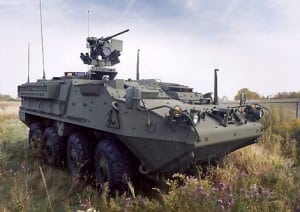
A redesigned General Dynamics [GD] Stryker wheeled vehicle outfitted with a potent 30mm cannon passed its critical design review this week, clearing the way for an initial contract to retrofit the vehicles next month.The Army in summer 2015 declared an urgent operational need for a Stryker with more punch in Europe as a show of force to deter Russian aggression and reassure NATO allies that the U.S. military has their back.“We have been asked to provide a long rifle to…

 By
By 








